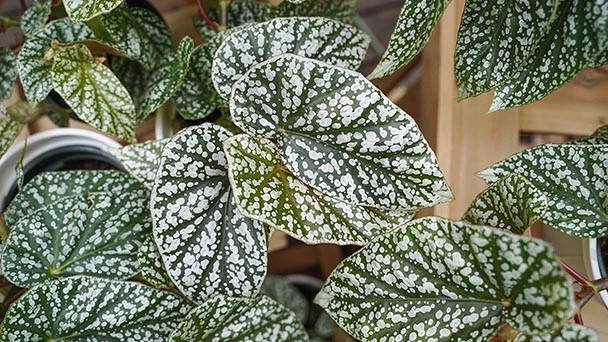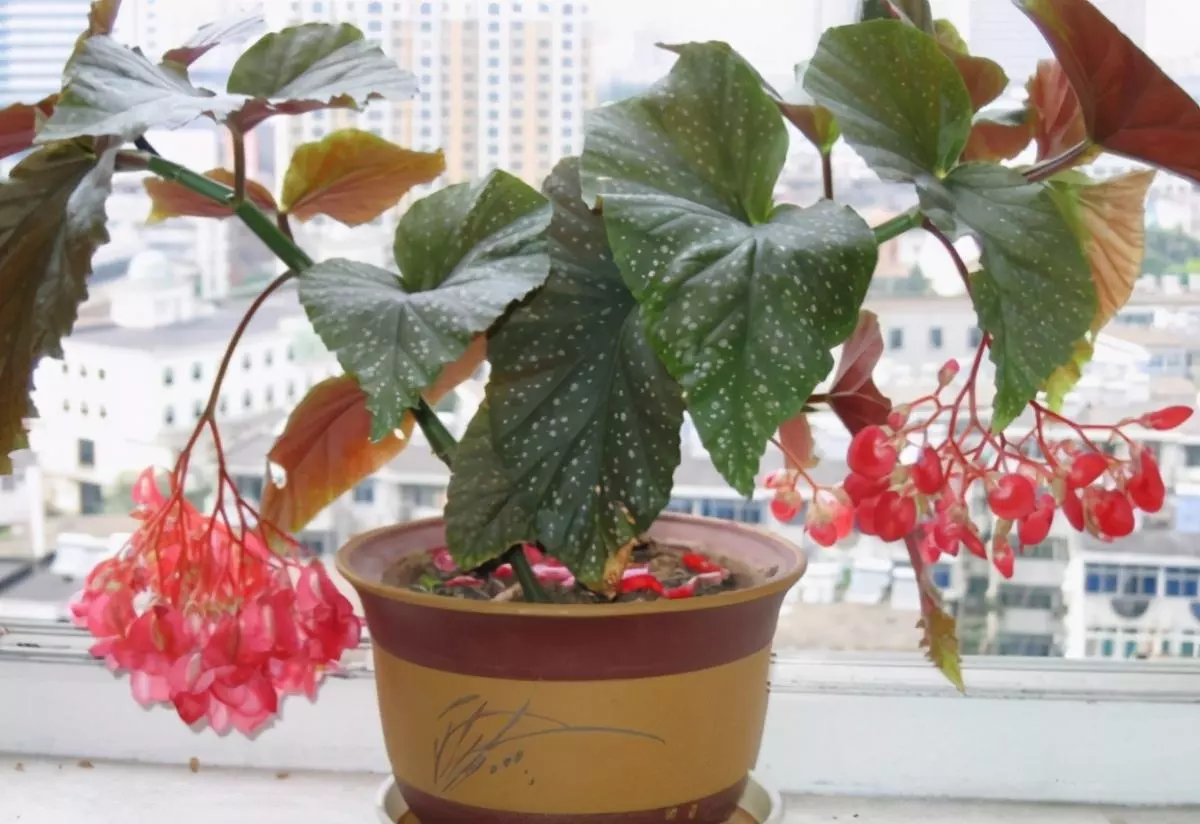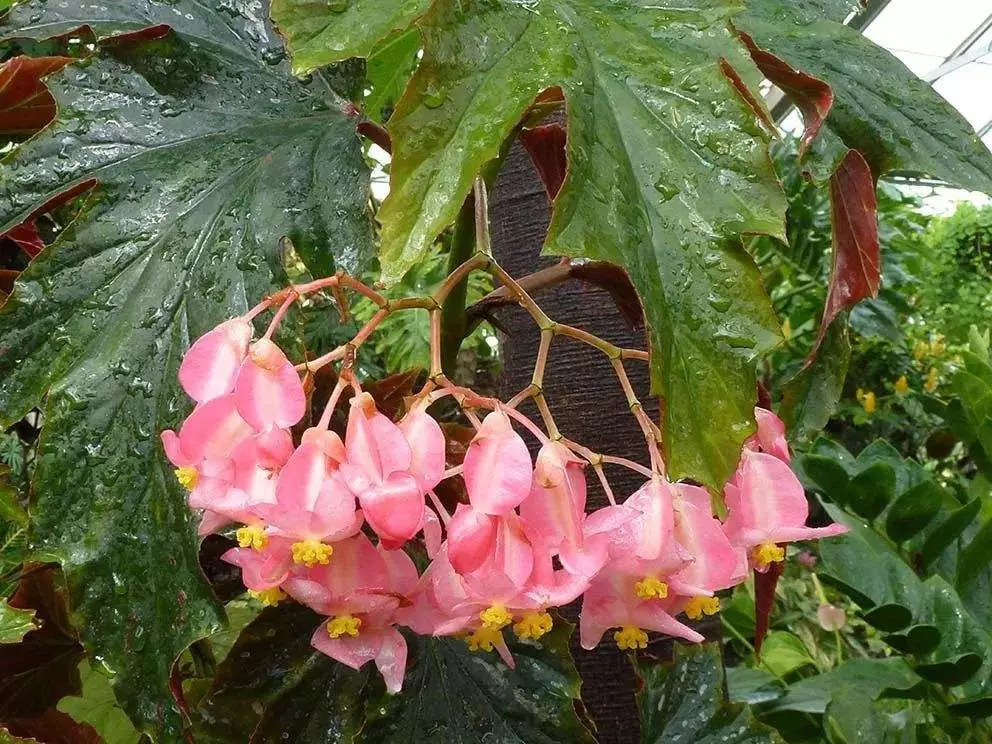Why Does My Begonia Leaves Turning Yellow?
Written by Ivy
Dec 30 2021

During the maintenance of Begonia rex, most of the Begonia leaves turning yellow is caused by improper maintenance methods or inappropriate maintenance environment. Let's discuss the causes and solutions of Begonia leaves turning yellow.
Begonia leaves turning yellow is probably caused by strong light exposure, low planting temperature or dry air. It needs to improve the maintenance environment and methods. No matter what plants are cultivated, improper maintenance will more or less cause problems in the maintenance process. Therefore, more observation and practice are needed in the maintenance process, and some maintenance experience will be obtained.
Begonia rex is suitable to be placed in astigmatism or bright places for cultivation. Especially in summer, when the light is strong, it should be properly shaded or put on a gauze curtain for maintenance, do not let the light direct, and maintain a good ventilation environment.
However, begonia rex cannot be placed in a too hidden place or in an environment with poor light for a long time. The stems and leaves will grow in vain and the stripes will become lighter.
Read More:
How Much Light Does Rex Begonia Need?
In the north, there is indoor heating in winter, and generally there will be no freezing injury. In spring, the temperature is unstable and the temperature difference between morning and evening is large. Do not move to the outdoor for cultivation too early; The South needs indoor cultivation in winter. When there is no air conditioning and the indoor temperature is low, we can put a plastic bag on Begonia rex at night to keep warm. Pay attention to keep the air vent, and move it away from the window or air vent. Take away the plastic bag during the day and place it in a place with sufficient light for cultivation. Similarly, don't move to the outdoor for cultivation early in spring to avoid sudden cooling and freezing injury.
Air drying in summer and autumn, besides normal watering, needs to spray to the surrounding environment frequently, increase air humidity, when air humidity is maintained at around 70%, it is adorable for Begonia Rex to germinate new leaves.
During the growth period of Begonia rex, keep the basin soil in a wet state without ponding; In summer, the temperature is high and the evaporation is fast. According to the basin soil conditions, pour water 1 ~ 2 times a week, or follow the principle of "see dry and turn wet".
In autumn, the temperature decreases and the amount of water is reduced, but water can be sprayed to the surrounding environment to moisturize; The temperature is low in winter, and Begonia rex enters the dormant or semi dormant period. It is necessary to control the watering amount to keep the basin soil in a slightly dry or slightly wet state.
Long term lack of fertilizer will also lead to Begonia leaves turning yellow. The leaves of flowers are thin and yellow, which is caused by the large trees and small pots of flowers, or the lack of pots, soil and fertilizer for a long time. At this time, we should gradually increase water and fertilizer and repot in time.
Begonia leaves turning yellow is probably caused by strong light exposure, low planting temperature or dry air. It needs to improve the maintenance environment and methods. No matter what plants are cultivated, improper maintenance will more or less cause problems in the maintenance process. Therefore, more observation and practice are needed in the maintenance process, and some maintenance experience will be obtained.
Excessive SunlightTemperature StressLow HumidityOverwateringUnderwateringImproper Fertilization Diseases
Excessive Sunlight
Begonia rex likes semi shade environment and is afraid of strong light exposure. If the light is too strong, it is easy to sunburn the leaves and lead to Begonia leaves turning yellow.Begonia rex is suitable to be placed in astigmatism or bright places for cultivation. Especially in summer, when the light is strong, it should be properly shaded or put on a gauze curtain for maintenance, do not let the light direct, and maintain a good ventilation environment.
However, begonia rex cannot be placed in a too hidden place or in an environment with poor light for a long time. The stems and leaves will grow in vain and the stripes will become lighter.
Read More:
How Much Light Does Rex Begonia Need?

Temperature Stress
Begonia rex is not cold resistant, and the suitable growth temperature is 15 ℃ ~ 22 ℃. Indoor planting is required in winter, and the planting temperature cannot be lower than 10 ℃, otherwise freezing injury will occur, and the leaves will turn yellow or dry.In the north, there is indoor heating in winter, and generally there will be no freezing injury. In spring, the temperature is unstable and the temperature difference between morning and evening is large. Do not move to the outdoor for cultivation too early; The South needs indoor cultivation in winter. When there is no air conditioning and the indoor temperature is low, we can put a plastic bag on Begonia rex at night to keep warm. Pay attention to keep the air vent, and move it away from the window or air vent. Take away the plastic bag during the day and place it in a place with sufficient light for cultivation. Similarly, don't move to the outdoor for cultivation early in spring to avoid sudden cooling and freezing injury.
Low Humidity
Begonia rex is a foliage plant and likes a humid planting environment. Therefore, air humidity will also affect the growth of Begonia rex. If the air in the cultivation environment is too dry, Begonia leaves turning yellow may appear coke spots, which will affect the ornamental value.Air drying in summer and autumn, besides normal watering, needs to spray to the surrounding environment frequently, increase air humidity, when air humidity is maintained at around 70%, it is adorable for Begonia Rex to germinate new leaves.
Overwatering
Begonia rex is not drought tolerant and likes humid environment, but too much watering, water can not evaporate in time, and the basin soil is too wet, which will cause problems in the stems and leaves of Begonia rex and cause Begonia leaves turning yellow.During the growth period of Begonia rex, keep the basin soil in a wet state without ponding; In summer, the temperature is high and the evaporation is fast. According to the basin soil conditions, pour water 1 ~ 2 times a week, or follow the principle of "see dry and turn wet".
In autumn, the temperature decreases and the amount of water is reduced, but water can be sprayed to the surrounding environment to moisturize; The temperature is low in winter, and Begonia rex enters the dormant or semi dormant period. It is necessary to control the watering amount to keep the basin soil in a slightly dry or slightly wet state.

Underwatering
Long term water shortage will also lead to Begonia leaves turning yellow. The leaf color on the top of soil drought is normal, and the lower leaves gradually dry up and fall off. This is caused by the aging of lower leaves and branches due to too full soil or water shortage for a long time. In this case, we should water appropriately to keep the soil moist.Improper Fertilization
Excessive fertilization leads to Begonia leaves turning yellow: excessive fertilization leads to concave convex and unsmooth flower leaves, plump new leaves and yellowing old leaves. In this case, we should water frequently, suspend fertilization, sprinkle some seeds in the basin and pull them out after emergence, so as to consume the fertilizer in the basin and restore the normal growth of flowers and trees. If possible, we'd better take it out of the basin, wash the roots and plant it in new soil for maintenance. If you don't want to change the soil, you can also wash away the fertilizer in the soil with water before maintenance.Long term lack of fertilizer will also lead to Begonia leaves turning yellow. The leaves of flowers are thin and yellow, which is caused by the large trees and small pots of flowers, or the lack of pots, soil and fertilizer for a long time. At this time, we should gradually increase water and fertilizer and repot in time.
Diseases
Pests and diseases may also lead to Begonia leaves turning yellow: the damaged plants of stem rot have dark spots at the stem base close to the soil surface, which are brown after expansion, shrink and rot. The pathogen infects the leaves and causes dark green water stains; The infected petioles were brown and rotten, and Begonia leaves turning yellow.Latest Updated
- Benefits of Bugleweed - 7 Science-backed Health Benefits
- Bugleweed Dangers & Side Effects - Is It Poisonous?
- How to Plant Evergreen Trees - What You Should Know
- When to Plant Evergreens - Grow Guide for Evergreen Trees
- 12 Wonderful Evergreen Shrubs for Your Garden
- 12 Popular Evergreen Plants with Pictures for Beginners
- When And How To Prune A Lilac Bush Like a Pro
- How to Grow & Care for Lilac Vine (Hardenbergia Violacea)
- Japanese Lilac Tree (Syringa Reticulata) Care & Propagation Guide
- Shumard Oak Pros and Cons - What to Know
Popular Articles
- Winter maintenance of Antirrhinum Majus
- How to Grow Terminalia Mantaly Tree
- How to Grow and Care for Crossostephium Chinense
- How to grow Antirrhinum Majus in spring
- Peristeria Elata (Dove Orchid) Profile: Info & Care Guide
- Underwatered Snake Plant (Sansevieria Trifasciata) - Signs And How To Fix
- How to Care for Brazilian Jasmine Plant (Mandevilla Sanderi)
- How to Grow & Care for Graptopetalum Purple Delight in Summer
- Rosa Chinensis (China Rose): Plant Growing & Care Tips
- How to Care for Baby Sun Rose (Aptenia Cordifolia)